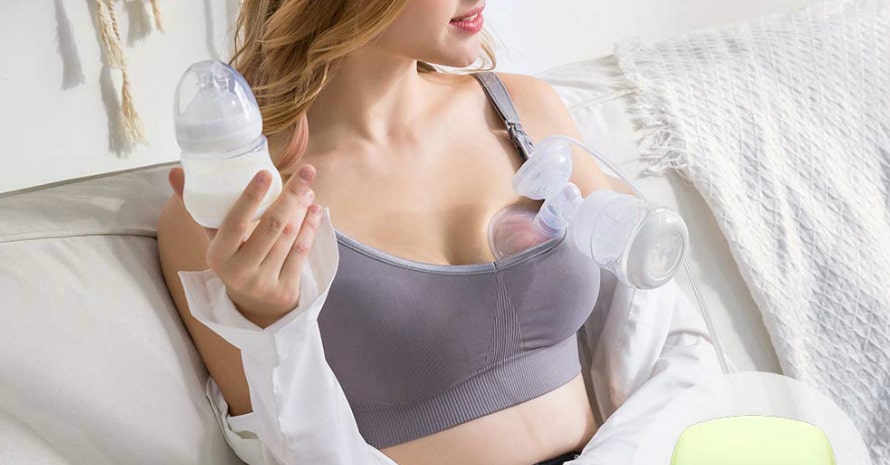
Reporting to work after a considerable maternal leave is challenging for many breastfeeding mothers. The thoughts of having your young one miles away as you work in a highly demanding environment can be highly depressing. Besides that, you must ensure that your kid gets efficient milk supply irrespective of the distance separating the two of you.
Given the challenges, breastfeeding mothers tend to consider cheaper and easier alternatives so that the kid’s development isn’t hindered. One of these options is buying a breast pump. With the item, you can express milk and store it for your toddler’s consumption later during the day. However, these pumps differ in:
- Affordability;
- Effectiveness;
- Comfort;
- User-friendliness;
- Ease of cleaning .
This makes it vital for moms to draft a plan and ensure it is the ideal one before buying a breast pump. Fortunately, the blog covers the essentials you need to know concerning breast pumps, from the different types accessible to the process of using each device. Let’s start with the types of breast pumps available.
Types of Breast Pumps Accessible

The many breast pumps available for purchase differ in cost, effectiveness, user-friendliness, among others. These factors highly affect your chance of picking an ideal item, but knowing what each pump entails should enable you to realize if a given tool will serve your needs to expectations.
- Manual Pumps
Affordability, as well as portability, make these pumps ideal for those in need of tools for occasional use. The device’s process of use demands that users do most of the job, which can be challenging for those expressing frequently. Additionally, manual pumps are time-consuming and equally tiring; therefore, those who need to express frequently should consider other options.
- Electric Pumps
The pumps are the best in terms of efficacy, making them ideal to anyone in need of expressing several times a day. They are also time-saving and moderately priced. Besides that, the items have a large milk storage capacity.
Those in need of a powerful breast pump should highly consider electric ones. The pump’s only drawback, however, is their dependence on electricity. This brings about the need for users to have some backup tools in the event of a power outage. All in all, these pumps are unique as it is possible to adjust the suction power so that the pattern you set mimics a nursing baby.
- Battery Operated Pumps
These are moderately powerful but miles ahead of manual pumps. They are also easily portable and user-friendly. The main con with battery-powered breast pumps is the way they are only suitable for use, not more than once per day. This is due to the items being moderately powerful.
Additionally, the items attract costly upkeep fees as the batteries require frequent replacements.
- Hospital Grade Breast Pumps
These items are highly powerful for full time access by multiple users. Their cost is equally high, and they are suitable for women with ill babies or toddlers who are unable to nurse.
- Hands-Free Pumps
These pumps are highly convenient and discreet. They can easily fit inside your bra or shirt and extract milk – even as you go on with your normal activities. Their cost is a bit high, but their utmost comfort and silence make them worth the few extra dollars you are to add.
back to menu ↑Utilizing a Breast Pump
Having an ideal tool isn’t enough to sort your problems when you are unaware of the procedure of using the item. It is for this reason that I’ve included this section to offer in-depth insight on how to utilize a breast pump.
Luckily enough, the process is swift and easy to understand. The section has been split into two to cover the procedures of using two main types of breast pumps.
back to menu ↑The Process of Utilizing an Electric Breast Pump
The item’s efficacy is unbeatable, making it the most recommended of all breast pumps. That said, the tool’s utilization process has some basic steps, which include cleaning and sterilizing the kit before using it.
If you need to know how to undertake the cleaning and sterilization process with ease, kindly check for the procedure from the pump’s manual. Now you need to find a place you are comfortable and follow the procedure below.
- Always maintain good hygiene when using the tool by cleaning your hands.
- Before you start expressing, all items that you need for the process or pump kit should be with reach.
- Since the tool requires a source of power to work, plug it into the socket. Ensure the batteries are working if you are using a battery-powered tool.
- Ensure you have an ideally fitting breast shield as you need to place it over your breast. Bear in mind that the item shouldn’t be painful at all.
- Center the flange, which is up to 4 mm wide than your nipple, and make an ideal seal by pressing the item gently.
- For double pumping, you only need to repeat the procedure for the other breast.
- Power the device on.
- As noted earlier, the item has a panel you can use to adjust the suction power, and that’s all you need now. Begin with low intensity, and make gradual adjustments until the milk starts to flow. Now set the speed as per your comfort needs. Again, remember the process shouldn’t be painful.
- In the event of a reduction in milk flow, feel free to turn your device off.
- You are now safe and free to remove the shields.
- All that’s remaining is to clean all parts that you were using and leave them to air dry. I recommend you use warm and soapy water for ideal cleaning.
The Procedure for Utilizing a Manual Breast Pump
Before you use the kit, the most important general rule is to ensure it is clean and sterilized. Once that is done, you need to follow the upcoming procedure.
- Hygiene is vital, and your hands need to be clean before operating the kit.
- Breast stimulation is vital, and massage is all you need here.
- After stimulation, place the shield over your breast and center the flange so that the nipple gets inside.
- To start expressing, you need to squeeze the lever gently at first. Make sure the pattern is similar to that of a nursing baby.
- Follow the above two steps as you interchangeably express from both breasts.
- The strength of squeezing the lever should increase until you notice a reduction in milk flow.
- Lastly, all the parts you were using require cleaning and air drying, then storing.
Breast Milk Storage
Expressed milk can be stored for long if these requirements are fulfilled. The period of storage is dependent on the temperature under which the milk is being stored.
- At room temperature, about 25C or 77F – the maximum time the milk can remain safe is 4 hours.
- In a refrigerator, about 4.4C, or 40F – the optimal storage time here is 4 days.
- Ensure refrigerated milk is used within this period.
- In a freezer, about – 17.8C or 0F – this can keep your milk safe for a period not exceeding 6 months.
The Frequency of Pumping
Your goals for pumping should be the main reason behind your expressing frequency. Those who are expressing with the aim of ensuring a steady supply of milk for their baby need to express after 3 to 5 hours.
However, the period is dependent on the tool you are using. Manual breast pump users can express after 3 hours while electric pump users can repeat the process after 5 hours. Those pumping for the sake of increasing milk production should express 8 to 10 times in 24 hours.
back to menu ↑Choosing an Outstanding Breast Pump
There are many factors you need to consider before purchasing your preferable item for pumping breast milk. Below are three of what I find essential to those buying a breast pump.
Those looking for a pump for frequent use should buy an electric one. Likewise, a manual pump serves occasional users to perfection.
- Heavier pumps might pose portability problems.
- Buying electric models that can use batteries is highly economical and increases the tool’s efficacy.
- Cost. Even though manual pumps are friendly-priced, their efficiency might be unsuitable for your use.
- Durability. Check for warranty and ensure the item is of ideal quality before purchasing.
Wrap Up
First-time users find the process a bit challenging, although, with time, most people get used to it. All in all, you need to remember that using the item shouldn’t be painful, and in case you experience any problems, consult a lactation specialist for assistance.
Those with a health cover in the US can have their breast pump costs settled by the insurance. All you need to do is to check the insurance policies to understand what they can cover.







